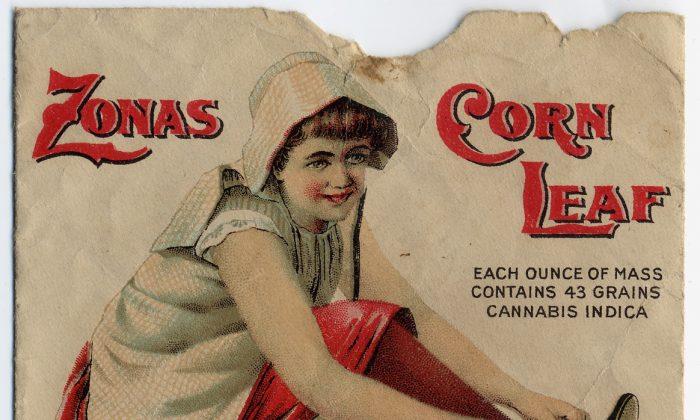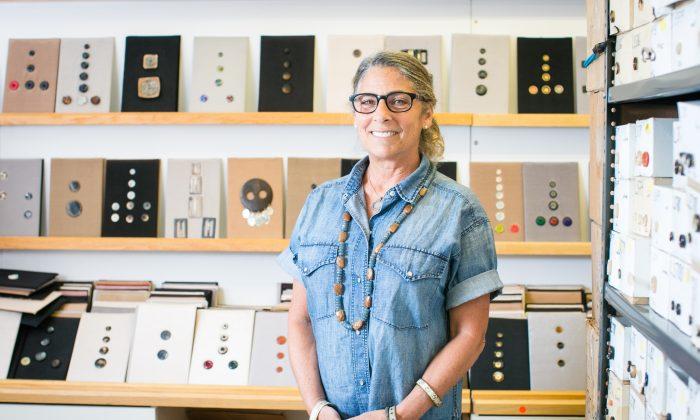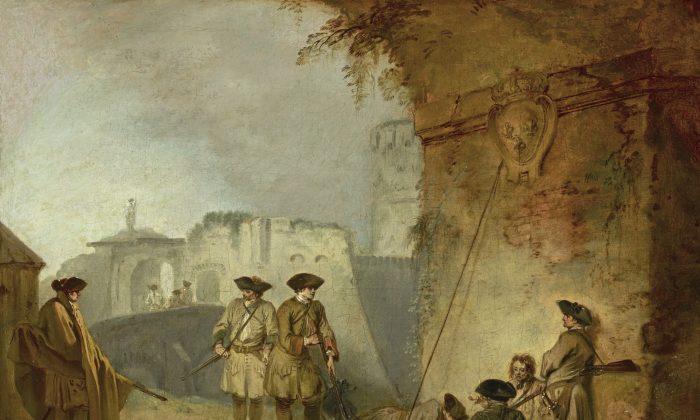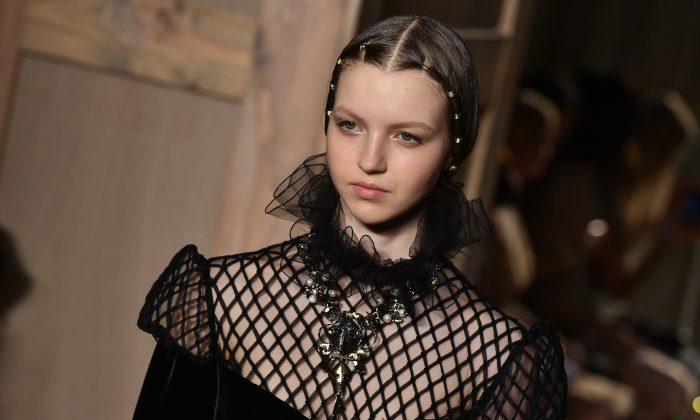NEW YORK—Once upon a time there was a golden haired maiden who had a gift for making gold into things that people never did see before. She was many things before she found her true calling. Her name is Lucie Heskett-Brem.
Not many of us see our lives in terms of a fairy tale. But then, meeting someone who is so aligned to her destiny that her creativity reverberates across continents is very reassuring for the rest of us who might doubt the existence of a divine plan for each and everyone of us.
“I never liked to have my hands still. At school they were trying to teach me to be still, and now it’s my job,” said jeweler-artist Lucie Heskett-Brem with a beaming and rather triumphant smile while she continuously softened the golden serpent chain in her hands. “I’m training it to be alive, like a real snake,” she explained.
We sat at the back of the Aaron Faber gallery in New York where Heskett-Brem is showing a collection of her pieces. She has been called “The Gold Weaver of Lucerne” (where she lives in the Swiss Alps) because of the way she crafts her work as well as the qualities with which she imbues them.
In the window display of the gallery hangs a giant spider-web that is as close to the texture of real spider-web as metal is ever going to get. She is surrounded by her 3-D pieces—wearable sculptures that look like sculptural mandalas.
As much as Heskett-Brem is interested in the three dimensional potential of jewelry, her tactile nature dictates the feel of her pieces and makes her work unique.
The heavy yellow-gold snake chain registers as both solid and liquid to the touch—a kind of shape-shifting metallic structure that warms up gradually as it stays in contact with the body.
Journey to Jewelry
She insisted that I try on the caress bracelet—a lattice of fine gold chain that she pulled onto my wrist. It moved up and down my arm just like a cuff that is only slightly heavier than silk. I wore it until the end of our interview, by which time, parting with it was somewhat hard.
“There is a platonic saying, ‘If someone is tied down with a chain you can’t remove the chain, you can only replace it with a lighter chain,’” Heskett-Brem said.
Granted, the existential chain of the human condition is sure to oscillate in gravity for all of us. For Heskett-Brem, it meant years of searching for a way to channel the energy of her fertile imagination and her restless hands. She mentioned translator, secretary, and even truck driver among the various jobs she had in the lead-up to becoming a jeweler in 1992, yet she was always making things with her hands.
Her first exhibition in 1993 was together with her father, a renowned sculptor, and her brother, a successful photographer. She sold double what she showed in the exhibition and was instantly in demand, exhibiting in London, Zurich, and New York in consecutive years.
Recently, her “Big Spiderweb” has been acquired and is on display at the Museum of Art & Design and her wearable sculpture called “ Pyramid” is at the Cooper Hewitt, Smithsonian Design Museum.
Contemplating her jewelry work through the years, she progressed from “real chains that became lighter until they became like soap bubbles,” she said pointing to one that is actually called “Soap Bubbles.” It is made up of a series of intertwined rings that are somewhat a reminder of bubbles as well as depictions of molecular structures. The chain collapses when flat and springs back to 3-D form when suspended in the air or worn on the body.
Divine Inspiration
The film “Lucie Heskett-Brem, The Gold Weaver of Lucerne” shows her house on the shores of Lake Lucerne in the Swiss Alps. This is where the fairy tale becomes increasingly believable. In the film she mentions that she likes repetitive manual work. “After a while of doing the same thing, my fingers seem to know the work all on their own, which allows me to listen to stories.”
The calmness of the picturesque surroundings and her own meditative state no doubt get channeled into the very substance of her meticulously hand-forged pieces. Some customers, sensing an energy in her work and who know of her love of stories, have teasingly asked her if she weaves the stories into her chains.
Inspiration is something that is hard to define. In Heskett-Brem’s case she points to her hands, her materials, and nature.
In the film she is more eloquent saying: “The best kind of inspiration is divine inspiration—an idea that comes out of nowhere. I cannot do anything to produce it. It is a gift. This is the most exciting and wonderful thing that can happen to me.”
Mark Evans, Managing Director of Bentley & Skinner in London (jewelers by royal appointment), where Heskett-Brem shows her work, has described her chains as having a charm and uplifting quality about them that is equivalent to a very beautiful piece of music.
Despite the modern debate over the definition of beauty, it seems that there is a worldwide consensus on Heskett-Brem’s work.
Be they cosmic, organic, geometric—her structures resonate with a recognizable harmony, which lends them an easy affinity with the human body. It’s as if once weaned from the nurture of their creator, her chains exude an impatience to be reconnected with the body, to be touched and warmed by it yet again.





Friends Read Free